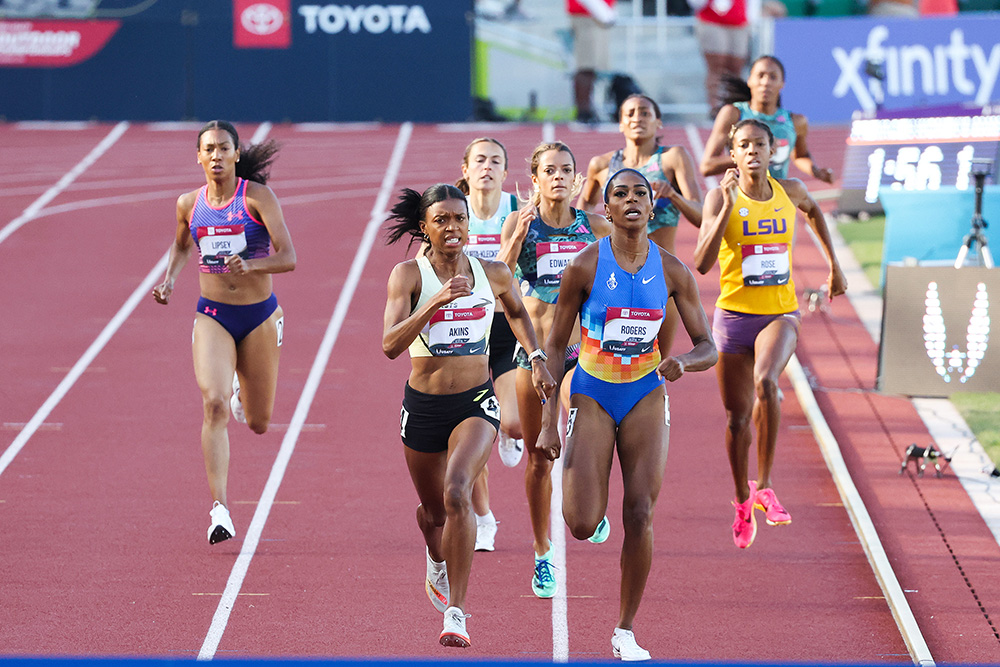THIS IS A résumé-building year for Nia Akins — back in February she won the USATF indoor title; here she added the outdoor crown in 1:59.50.
Of course, those golds are easier to come by when Athing Mu isn’t in the field. Given her bye to Budapest as the reigning gold medalist, Mu opted to try her hand at the 1500.
That doesn’t mean Akins’ climb to the top of the podium was cheaply won. To get there, she had to defeat Raevyn Rogers, the storied Oregon alum who owns 2 global medals, 5 NCAA titles (6 counting relays), and immortality as part of the Hayward Field tower mural.
For the better part of the final, Akins hid deep in the pack — as far back as 6th with 300 remaining. Up front, NCAA champ Michaela Rose of LSU and Sage Hurta-Klecker traded elbows as they battled for the lead. Rose ultimately won that battle and led at halfway in 58.37, leading Hurta-Klecker (58.54) and Rogers (58.67). Akins clocked 58.80.
With 200 remaining, Rogers surged to the front and seemed sure to please the Eugene crowd by finally winning her first USATF outdoor title after 3 silvers and a bronze.
But Akins quietly slipped past the rest of the field and pulled onto Rogers’ shoulder. Down the stretch, it was apparent that the momentum lay with Akins and she sprinted ahead with 50 left. Her final 100 of 14.82 was far superior to Rogers’ 15.41.
Rogers’ 1:59.83 left her 0.03 short of the World qualifying standard. Third-placer Kaela Edwards (2:00.52) also lacks a qualifier, but both are currently well-placed in the overall rankings list.
Four-time winner Ajee’ Wilson was never a factor, placing a distant last in 2:05.88.
Akins, an NCAA runner-up in ’19 for Penn, is only a little more than a year removed from her first trip under 2:00. Her title run marked only her seventh time under that barrier; the sixth came just 3 days earlier in the heats, 1:59.09.
She believes over-distance racing in the spring aided her cause here. “I tried to run some 15s,” she said. “Can’t say they were memorable. Can’t say I wanna do it again, but I feel like it helped from a strength standpoint. I feel like the speedwork just really clicked after that. I think that strength piece was really missing. And also just mental stuff too, just like positive talk before the race. You know, just being really positive and focused too.”
CLICK HERE to Read the Full Original Article at Track & Field News…

